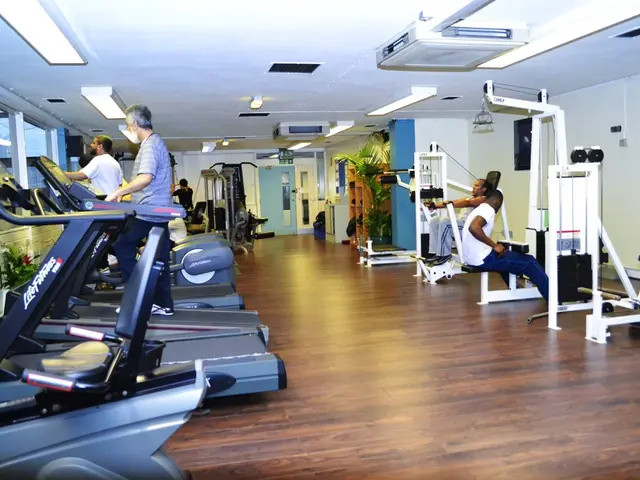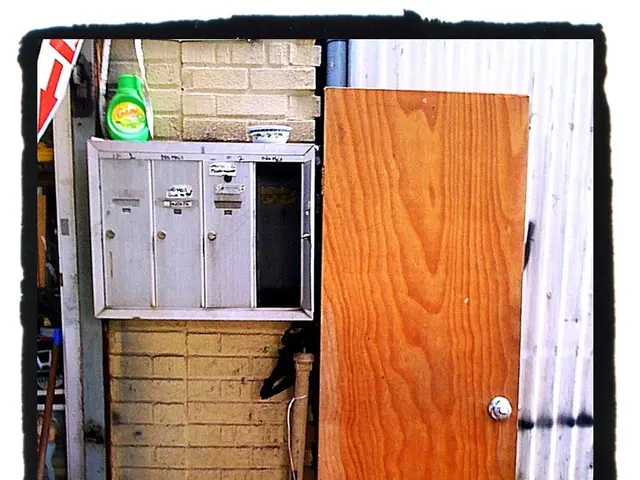NASA Requires Development of Gloves and Footwear Resilient to Moon's Extreme Cold
A NASA Cool-Down:
Getting ready for some lunar chills, NASA is prepping up to send astronauts to the Moon's frigid south pole, and they're working overtime to make sure their space jackets can handle the nippy temperatures.
A squad of NASA's top engineers is putting elbow joints to the test in a colossal cryogenic chamber, evaluating the materials of the next-gen spacesuits destined for our lunar neighbors. This sprawling lab, aptly named CITADEL, was initially built to test robotic parts for uncrewed missions to the icy moons scattered across our solar system. But now, it's gearing up for humanity's highly-anticipated comeback to our lunar home.
"We're digging into the risks of our astronauts stomping about in permanently shadowed regions, and gloves and boots are crucial players here, as they're the ones making prolonged contact with freezing surfaces and tools," Zach Fester, an engineer with the Advanced Suit Team at NASA Johnson, and the technical lead for the boot testing, put it plainly.
CITADEL stands at a towering 4 feet (1.2 meters) tall and a broad 5 feet (1.5 meters) wide, and resides at NASA's Jet Propulsion Laboratory. Most cryogenic facilities freeze things using liquid nitrogen, but CITADEL opts for compressed helium to plummet temperatures to an icy -370 Fahrenheit (-223 Celsius). It takes CITADEL several days to reach these icy depths, and having it open can reset the whole cooling process. To avoid this freeze-thaw hiccup, CITADEL is armed with four load locks, nifty drawer-like chambers that let them slip test materials inside while keeping it cool and vacuous.
CITADEL's also equipped with a robotic arm to pick up test materials, and sports visibility cameras that soak up both visible and infrared light. For simulations of a lunar mission, the team will toss in abrasion testing and lunar regolith-like materials for added realism. They'll even add aluminum blocks to mimic the tools our astronauts will grab during their moonwalk.
In the past, NASA would recruit their astronauts to put their mitts in a chilly glove box for thermal testing. The astronauts would clutch onto icy objects and bear the cold until their skin reached a mere 50 degrees Fahrenheit (10 degrees Celsius). Now, NASA's whipping up a custom-built manikin hand and foot for testing inside CITADEL. The manikin's extremities boast a system of fluid loops that mimic the flow of warm blood, and it's outfitted with dozens of temperature sensors to track the climates inside the gloves and boots.
The Artemis 3 mission, slated for 2027, aims to make us the first humans on the lunar surface since the Apollo era. While the Apollo astronauts touched down near the equator on the Moon's near side, Artemis crew members will embark on an adventure to the Moon's southern pole. If you thought the equator was extreme, brace yourself: the southern pole's a harsh landscape, thanks to the extreme cold temps and dark areas where sunlight never reaches. Artemis astronauts will spend somewhere around two hours at a pop inside craters teeming with ice deposits, where the temperatures can dive to a bone-chilling -414 degrees Fahrenheit (-248 degrees Celsius).
When astronauts return to the Moon, they'll strut around in some spiffy new spacesuits. In 2022, NASA tasked Axiom Space with creating the first moonwalking spacesuits since the Apollo missions. Axiom Space then presented the AxEMU, short for Axiom Extravehicular Mobility Unit. This modern suite struts its stuff on the heritage of the Apollo suits while employing cutting-edge technology to enhance astronaut mobility and better protect them from the lunar madness. Axiom Space teamed up with Prada to tap into the brand's design expertise and fabulous materials, while still offering an aesthetically pleasing look for our moonwalkers.
The lingering tests in CITADEL will help NASA establish criteria for its next-gen AxEMU spacesuits. For now, the gloves they're testing in the chamber are the sixth iteration of a glove NASA's been rocking since the 1980s, part of the Extravehicular Mobility Unit astronauts wear during spacewalks on the International Space Station. Unfortunately, so far, those gloves haven't cut the cold weather mustard, as they may not meet the lunar south pole's chilling thermal demands, according to NASA. The testing results on the boots aren't out yet, but we'll keep our fingers crossed for those foot warriors.
Shane McFarland, lead of technology development for the Advanced Suit Team at NASA Johnson, put it concisely, "This test aims to determine the limits: How long can these gloves or boots handle the hostile lunar environment? We want to quantify the gap in our current hardware capabilities and give that info to the Artemis suit vendor, while also building this unique test capability to evaluate future hardware designs."
So, here's to a cozy journey across the Moon's colder-than-ever south pole. Fingers (literally) crossed that NASA's got our astronauts covered!
Did You Know:- Chilling Extremes: The lunar south pole includes permanently shadowed regions that can reach as low as -414°F (-248°C), making them among the coldest locations in the solar system[1].- Key Thermal Requirements: The gloves and boots of NASA's next-gen spacesuits must withstand extreme cold, maintain thermal integrity during prolonged contact with cold surfaces, and function in vacuum conditions[1-2]. These rigorous requirements ensure safe exploration during Artemis III's lunar mission[2].
- As NASA prepares for the Artemis 3 mission in 2027, the focus is on the development of next-generation spacesuits that can withstand the frigid temperatures of the Moon's south pole, aiding in the health and wellness of the astronauts.
- The testing of these spacesuits is carried out at CITADEL, a lab at NASA's Jet Propulsion Laboratory, where temperatures are plummeted to an icy -370 Fahrenheit (-223 Celsius) using compressed helium, simulating the space-and-astronomy conditions of the Moon's south pole.
- In collaboration with Axiom Space, NASA is working on the AxEMU, a modern spacesuit designed for lunar exploration that combines traditional Apollo suit design with advanced technology seen in health-and-wellness and technology products.
- The results from the testing in CITADEL will contribute significantly to the future development of spacesuits, helping to establish thermal requirements and evaluate future hardware designs to ensure the safety and success of space missions in the chilling extremes of the lunar south pole.








